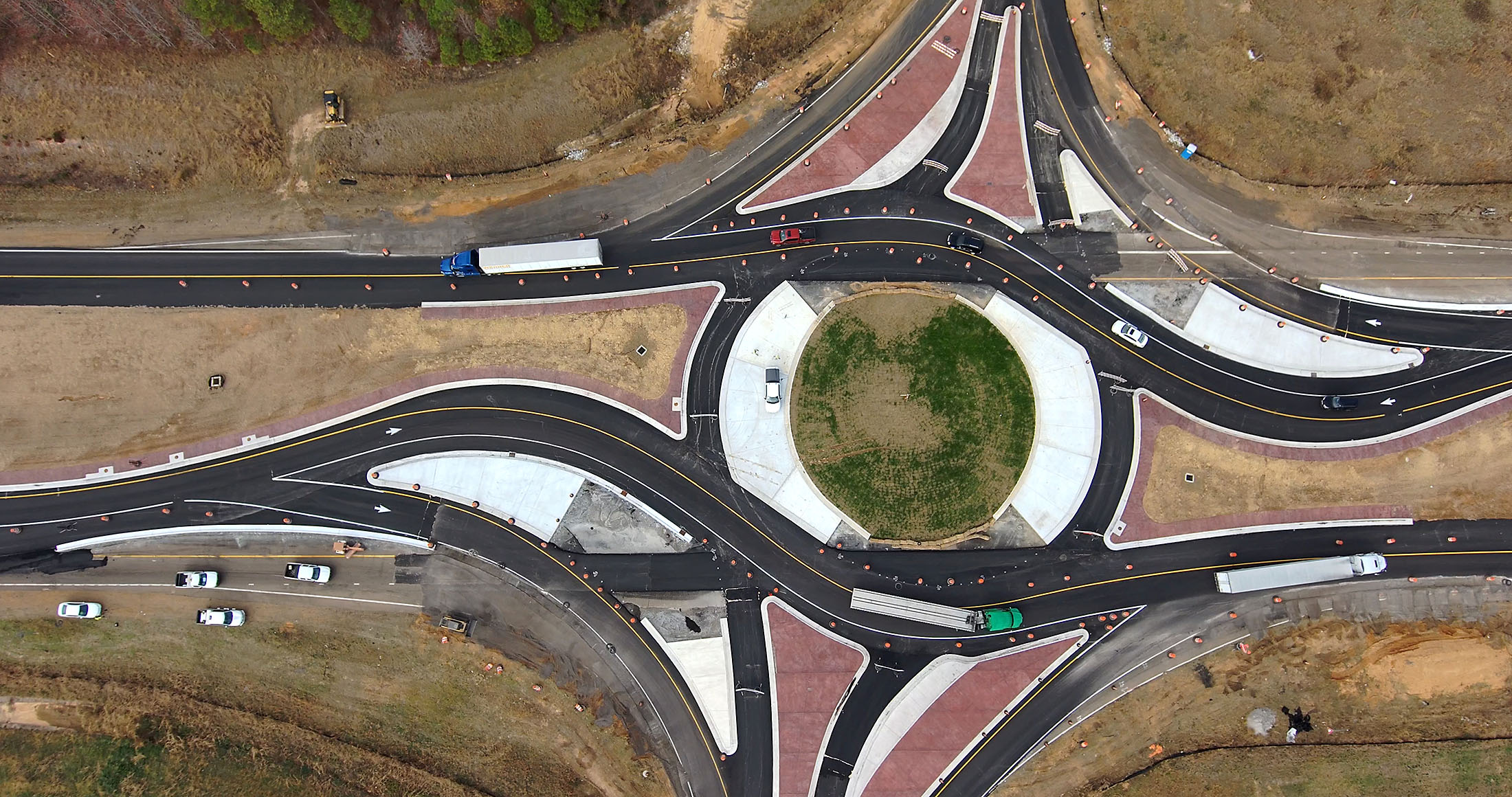
States Innovate!
Alaska Adds RRFBs at Roundabouts
The Alaska Department of Transportation and Public Facilities (DOT&PF) installed rectangular rapid-flashing beacons (RRFBs) at the crosswalks at the entrances and exits of the Dowling Road roundabouts in Anchorage. Although other RRFBs exist in the State, these are the first of their kind in Anchorage and the first to be installed at any roundabout in Alaska. According to the Alaska DOT&PF, driver yielding rates to pedestrians in crosswalks at these roundabouts tend to be low. In what will be its first study of the RRFB devices, the Alaska DOT&PF plans to measure the yielding rates at these locations over 3 years and compare them to rates prior to RRFB installation.
The Kentucky Transportation Cabinet’s SAFERoad Solutions guide provides videos and factsheets for public engagement on designs such as roadway reconfiguration.
Credit: Kentucky Transportation CabinetKentucky Promotes Safer Road Solutions
The Kentucky Transportation Cabinet (KYTC) recently developed an online public engagement resource called SAFERoad Solutions to explain road designs that improve safety, mobility, and efficiency. The guide covers 17 topics, including roadway reconfiguration (Road Diets), restricted crossing U-turns, and double crossover diamond (diverging diamond) interchanges. Each topic includes a video, illustration, and downloadable fact sheet that communicate why the design is effective and how to navigate it.
Michigan Deploys Adaptive Signal Control Technology
To help overcome operational obstacles posed by growing tourism in the Traverse City area, the North Region of the Michigan Department of Transportation (MDOT) designed and deployed adaptive signal control technologies (ASCT), closed-circuit television cameras, and WiFi/Bluetooth readers aimed at reducing congestion, improving travel time reliability, and reducing traffic crashes. The system enables MDOT to monitor and measure traffic operations and make regular adjustments for optimization. Learn more in a case study recently published by the National Operations Center of Excellence.

The Mississippi DOT is expanding its use of roundabouts by installing one on a four-lane highway.
Credit: Mississippi Department of TransportationMississippi Expands Roundabout Use
The Mississippi Department of Transportation (MDOT) is adding a new roundabout at the intersection of U.S. 72 and State Route 7 in Benton County that will be the first roundabout of its kind in Mississippi to be installed on a four-lane highway. Roundabouts are an FHWA Proven Safety Countermeasure that can meet a wide range of traffic conditions while substantially reducing crashes that result in serious injury or death by reducing conflict points and promoting lower speeds.
Watch an Ohio DOT video to learn how the agency is using a variable speed limit system to reduce crashes on Interstate 90.
Credit: Ohio Department of TransportationOhio Sees Success with Variable Speed Limits
The Ohio Department of Transportation (ODOT) and Lake County, OH, Sheriff’s Department are seeing a reduction in crashes after working together to develop the first Variable Speed Limit (VSL) section of highway in the State. VSL systems are a weather-responsive management strategy that use digital speed limit signs to reduce the speed limit during adverse weather, such as the lake-effect snowstorms Lake County receives during winter. Installed on a portion of Interstate 90 (I-90), the VSL system works in coordination with ODOT’s Intelligent Transportation System, which includes traffic cameras, dynamic message signs, and road weather information stations that monitor visibility and precipitation. The ODOT Traffic Management Center receives the road weather information and works with local law enforcement and ODOT managers to make decisions on when to lower speed limits. According to an ODOT news release, from 2005 to 2015, this section of I-90 saw a yearly average of 76 crashes reported, with 37 in the winter. Since the implementation of the VSL system in 2017, crashes along this stretch of I-90 dropped by more than 35 percent to an average of 49 per year, with 21 in the winter.
States Integrate VPI into the NEPA Process
A recent FHWA report highlights case studies on eight transportation projects that incorporated virtual public involvement (VPI) practices into the National Environmental Policy Act (NEPA) process. The case studies show how agencies used a hybrid approach to public involvement or virtual-only approach (supplemented with traditional outreach methods like mailings and newspaper ads) during the COVID-19 pandemic. Agencies highlighted include Multnomah County, OR, which held an online open house and developed a map-based story-telling tool for its Earthquake-Ready Burnside Bridge Project, and the Virginia Department of Transportation, which held virtual Q&A sessions to provide sufficient time for dialogue about its Interstate 495 Express Lanes project outside of the public hearing. Visit the FHWA’s Environmental Review Toolkit webpage to learn how all eight agencies integrated VPI methods into NEPA.
Disclaimer: The U.S. Government does not endorse products or manufacturers. Trademarks or manufacturers’ names appear in this document only because they are considered essential to the objective of the document. They are included for informational purposes only and are not intended to reflect a preference, approval, or endorsement of any one product or entity.
Except for the statutes and regulations cited, the contents of this document do not have the force and effect of law and are not meant to bind the States or the public in any way. This document is intended only to provide information regarding existing requirements under the law or agency policies.
Recommended Citation: U.S. Department of Transportation, Federal Highway Administration - Washington, DC (2024) Innovator Newsletter, March/April 2024, Volume 17 (101). https://doi.org/10.21949/1521775



